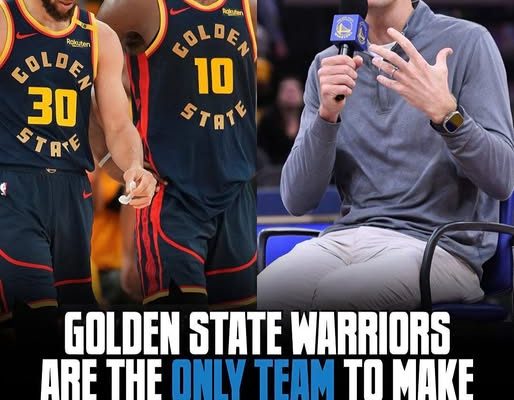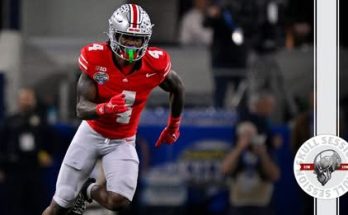In an offseason that has already been defined by aggressive trades, blockbuster free-agent signings, and bold roster overhauls, the Golden State Warriors have taken a dramatically different approach. While other teams scramble to reshape their rosters and position themselves for a run at the championship, the Warriors have done… nothing. Literally nothing. They remain the only team in the league that has yet to make a single tangible move this offseason, an absence of action that has sparked equal parts curiosity, frustration, and speculation among fans and analysts alike. For a franchise that has built its reputation on calculated aggression and championship pedigree, this level of stillness is as surprising as it is puzzling, especially given that they just wrapped up a season that left many questions unanswered about their place in the NBA’s current hierarchy. The Warriors’ inaction begs the question: is this a sign of confidence in the roster they already have, a calculated patience to wait for the right opportunity, or a missed chance to evolve in a league that never stops moving?
For context, the Warriors’ 2024-25 campaign was a turbulent one. Despite the brilliance of Stephen Curry, the steady presence of Draymond Green, and flashes of excellence from rising star Jonathan Kuminga, the team found itself fighting for playoff positioning in a Western Conference that is deeper and more competitive than ever. Inconsistency, injuries, and roster imbalance plagued the Warriors, making it clear that if they wanted to contend with the likes of the Nuggets, Timberwolves, Mavericks, and Thunder, some adjustments would be needed. Normally, this would set the stage for a proactive offseason, the kind where Golden State’s front office — led by general manager Mike Dunleavy Jr. — would be fielding calls, exploring trades, and scanning the free-agent market for upgrades. Instead, the Warriors have opted for a hands-off approach that feels eerily like they are watching the action from the sidelines rather than engaging in it.
The landscape of the NBA offseason has been nothing short of explosive. Star players have changed addresses, role players have signed for significant money, and multiple teams have reshaped their rosters in pursuit of championship glory. The Thunder have fortified their depth, the Lakers have pursued veteran upgrades, the Kings have doubled down on shooting and athleticism, and the Mavericks have added key defensive pieces to support Luka Dončić and Kyrie Irving. Even traditionally quiet teams like the Spurs and Hornets have made strategic moves to set up their futures. But when you glance at Golden State’s transaction sheet, it’s completely blank — no trades, no signings, no contract extensions, no training camp invites. The Warriors are essentially standing in the same position they were the moment the season ended, a stark contrast to the frantic pace of change elsewhere in the league.
Some might argue that this is a calculated decision rooted in long-term thinking. The Warriors could be waiting for the market to cool, banking on midseason trade opportunities, or positioning themselves to capitalize on another team’s desperation later in the year. Golden State has been known to operate with patience before, understanding that the first week of free agency is often overpriced chaos. But there’s a difference between patience and passivity, and right now, the optics are starting to tilt toward the latter. The problem is that the Warriors aren’t just any team — they’re a franchise with a shrinking championship window, an aging superstar in Curry who deserves every chance to compete for another ring, and a fanbase that has grown accustomed to seeing bold moves in pursuit of excellence. Waiting too long risks falling behind in a league that rewards decisiveness.
This period of inaction also raises questions about the Warriors’ internal evaluation of their roster. Are they genuinely satisfied with their current mix of players, believing that health and chemistry alone will push them back into contention? Or are they hamstrung by financial constraints, unable to make moves without venturing further into the luxury tax penalties that have already cost them tens of millions? The new NBA collective bargaining agreement has made it far more difficult for high-spending teams to add talent, placing heavier restrictions on trades, mid-level exceptions, and roster flexibility. Golden State, as one of the most expensive teams in the league, is feeling those effects more than most. It’s possible that their lack of moves isn’t a matter of choice but of necessity, a byproduct of a punitive system designed to break up sustained dominance.
Meanwhile, the fan response has been mixed. On one hand, there is a segment of the Warriors’ faithful who trust the front office’s track record and believe that the best move might be to stand pat, allowing younger players like Moses Moody, Brandin Podziemski, and Trayce Jackson-Davis to grow into larger roles. On the other hand, many fans are frustrated, pointing out that simply running it back with the same group that struggled last season feels like an admission that the team is no longer serious about chasing championships. Social media is littered with posts questioning whether the Warriors are wasting the twilight of Curry’s career, letting rivals strengthen their rosters while Golden State remains frozen in place. For a franchise that has prided itself on maximizing every ounce of its championship core, the current approach feels like a gamble — one that might not pay off.
The Warriors’ coaching staff, led by Steve Kerr, has also been placed in a difficult position. Kerr’s system thrives on ball movement, spacing, and defensive cohesion, all of which depend heavily on having the right personnel in place. While he has shown an ability to adapt to different rosters, there’s only so much scheming that can be done without the right mix of talent. If Golden State enters the new season with the exact same lineup and depth chart as last year, they’ll be relying heavily on internal improvement, health, and the hope that their veterans can maintain their level of play. That’s a dangerous bet in the modern NBA, where other teams are not just improving incrementally but making seismic changes to their rosters in pursuit of titles.
It’s also worth noting that the Warriors’ lack of moves could signal something bigger on the horizon. In NBA front office strategy, sometimes doing nothing in the short term means waiting for a major opportunity — a superstar trade demand, a franchise-altering deal, or a market shift that suddenly makes a previously impossible acquisition feasible. Golden State could be monitoring the situations of high-profile players around the league, ready to strike when the time is right. If that’s the case, their silence could prove to be an act of discipline rather than neglect. But as of now, that’s purely speculative, and until something actually happens, it’s hard to sell patience as a plan when rivals are actively getting stronger.
From a broader perspective, the Warriors’ offseason approach — or lack thereof — highlights the fine line between stability and stagnation. Stability can provide continuity, trust, and cohesion, all of which have been hallmarks of Golden State’s dynasty. But stagnation can lead to complacency, predictability, and decline, especially in a league where younger, faster, and more athletic teams are constantly emerging. Golden State has been one of the most innovative organizations of the past decade, changing the way the game is played with their emphasis on shooting, spacing, and pace. But innovation requires adaptation, and adaptation requires action. Right now, the Warriors’ unwillingness to engage in the offseason arms race feels like the opposite of the forward-thinking mentality that got them to the top in the first place.
The truth is, the Warriors still have one of the most dangerous weapons in basketball in Stephen Curry. As long as he is on the court, they have a chance to beat anyone. But Curry alone can’t overcome the depth, length, and athleticism of the top Western Conference contenders without the right support around him. If the Warriors are banking on the idea that their internal growth and veteran savvy will be enough, they’re taking a massive risk. In a league where championship windows can close in an instant, choosing not to act can sometimes be just as impactful as making the wrong move. The offseason isn’t over yet, but every day that passes without a single transaction feels like another opportunity slipping away. If Golden State’s plan is to strike late, they had better hope the perfect opportunity actually arrives — because if it doesn’t, this offseason of silence could be remembered as the moment the dynasty’s competitive edge began to dull.



